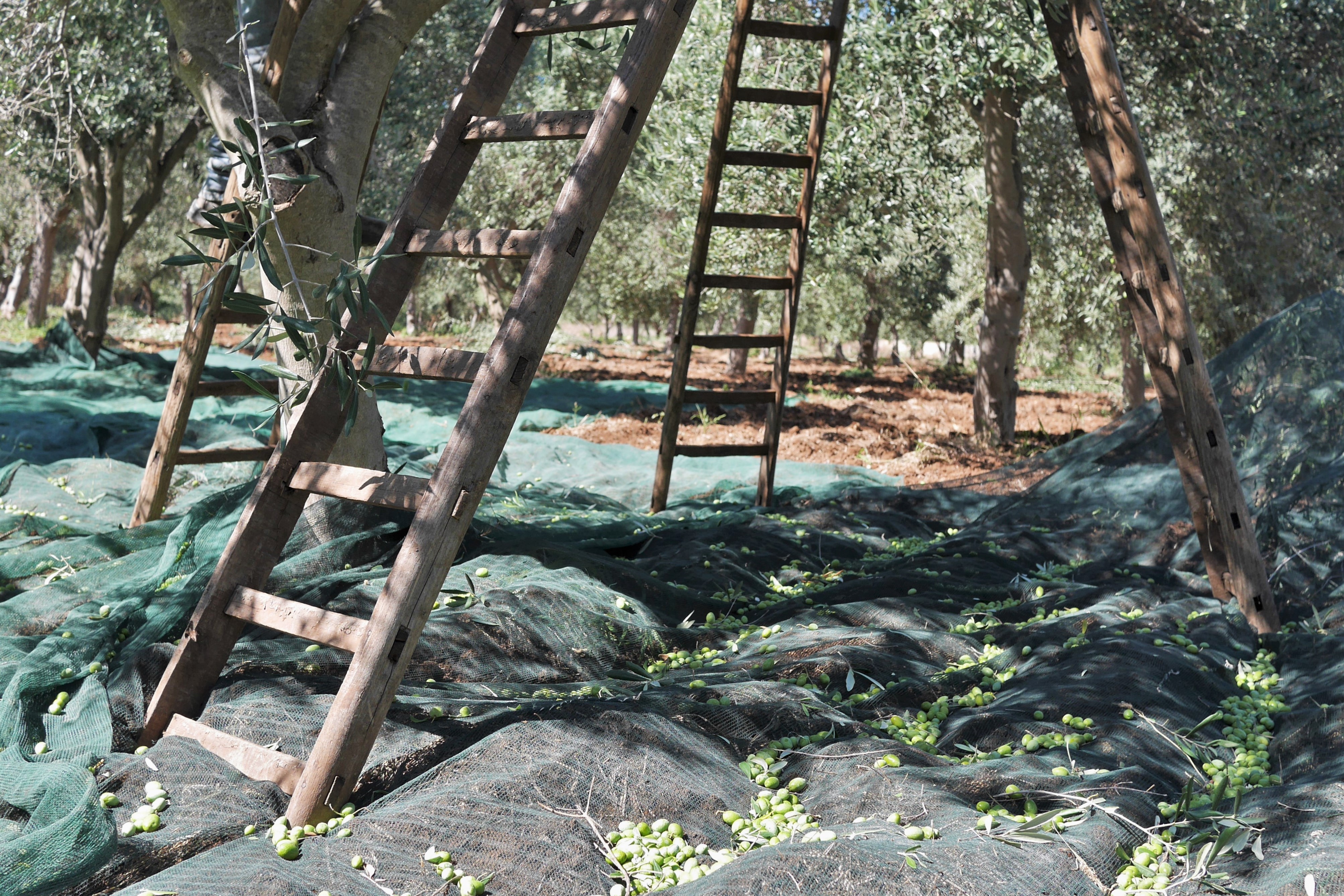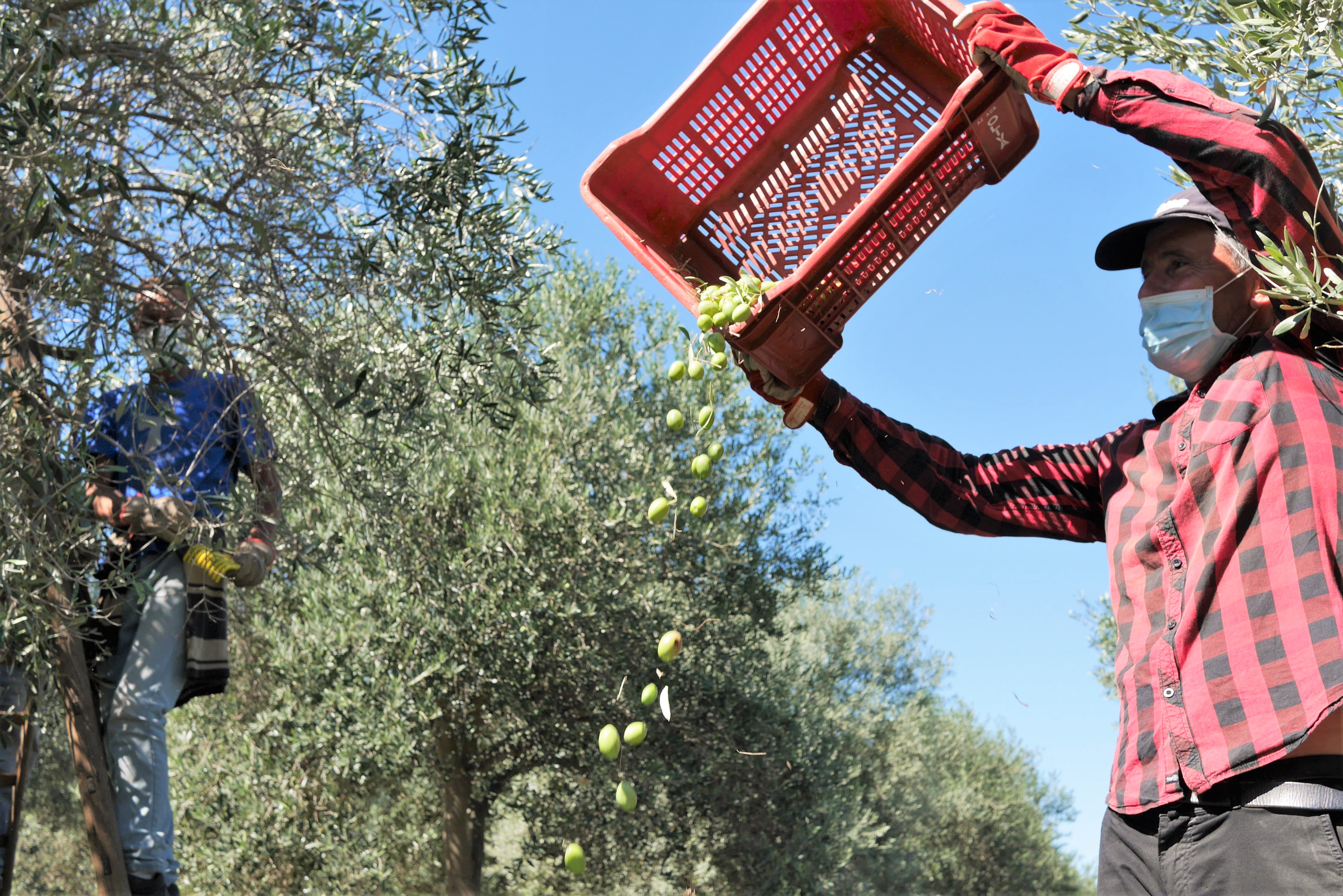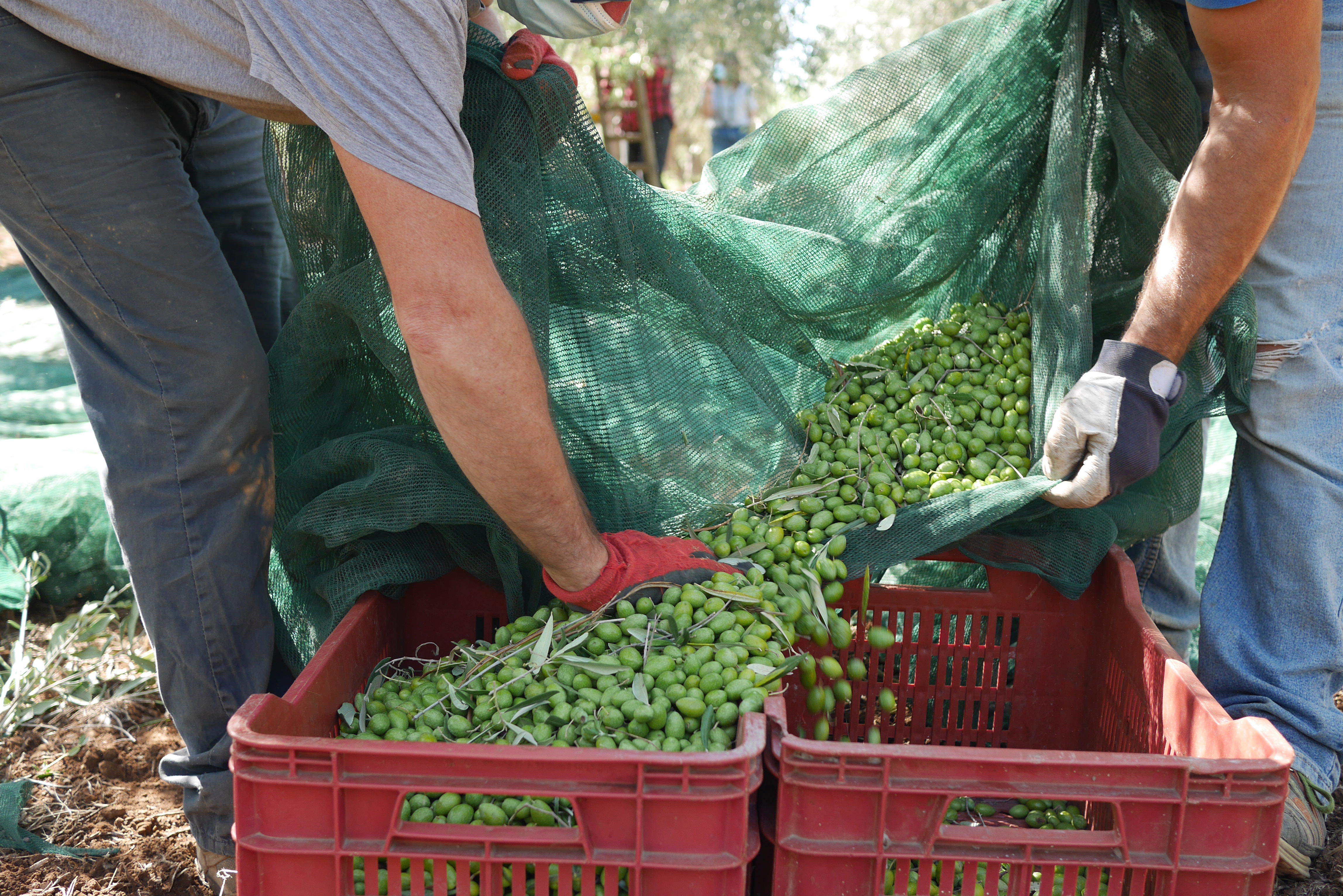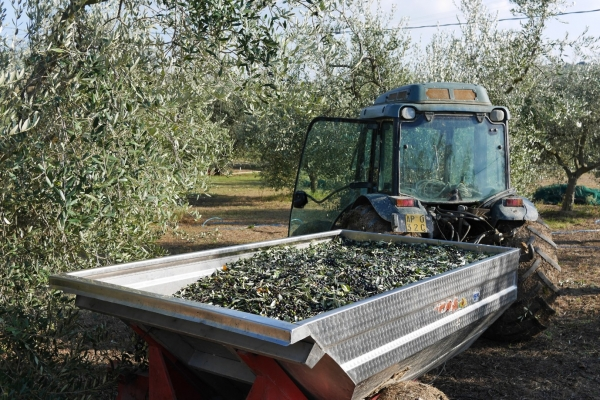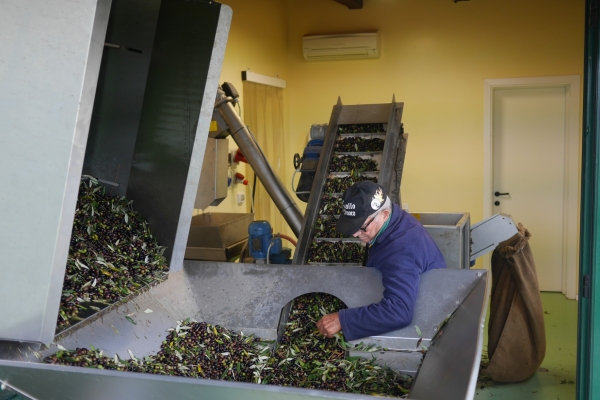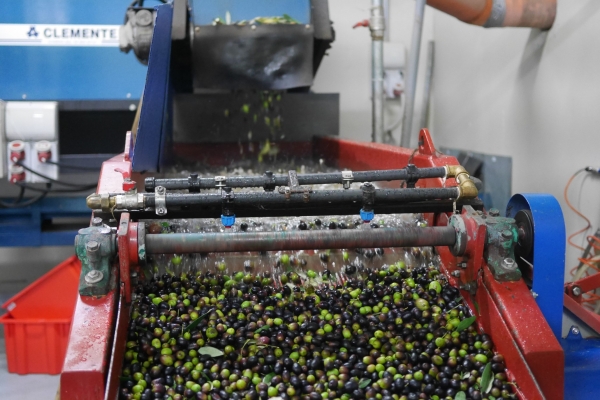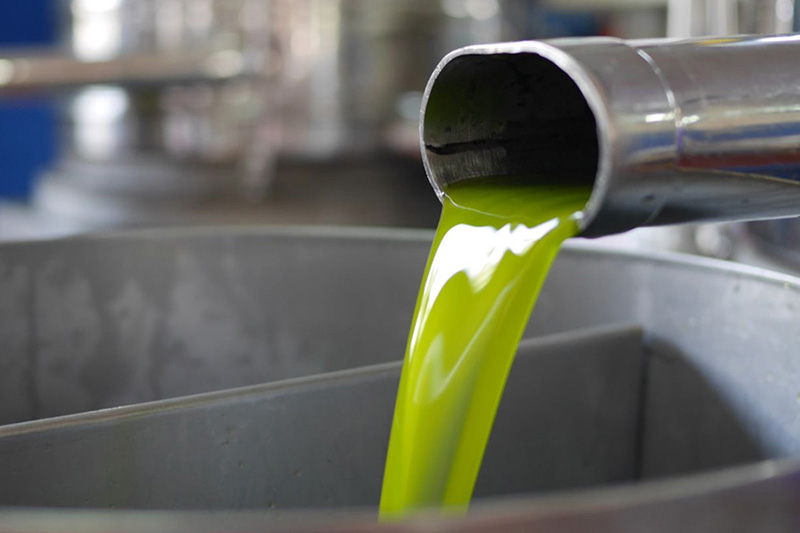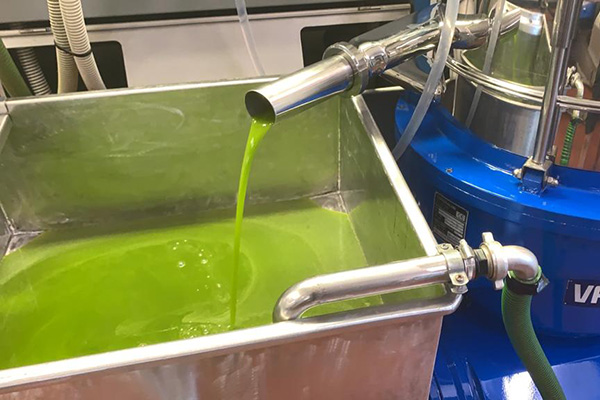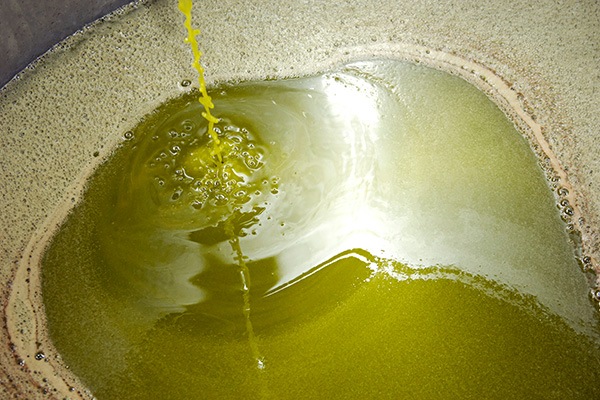How Extra Virgin Olive Oil Is Made
Extra virgin olive oil, in simple terms, is the pure juice extracted from crushed olives. The historical evidence of olive oil production can be traced back for thousands of years across the Mediterranean and Levant regions. Traditionally, this involved using large stone wheels turned by donkeys to crush olives into a paste, which was then spread onto rope mats. These mats were pressed in massive screw presses, allowing the oil to be squeezed out and collected in large pottery amphorae.
Thankfully, advancements have revolutionized the process, focusing on technology and modern hygiene standards in today's production. In the middle of the 20th century, the shift occurred from using presses to employing centrifuges to create most extra virgin olive oil.
Let's delve into how extra virgin olive oil is made in Nudo farmers' oil mills today.
Harvesting & Delivery
The process begins with the careful harvest of olives at their peak ripeness during autumn. Once picked, the olives must be delivered to the mill within 24 hours to prevent degradation. Upon arrival, the olives undergo sorting to remove any excess foliage, leaves, and twigs collected during the harvest.
Despite the technological advancements in our mills, reminiscent of ancient olive stone methods, there remains a distinct 'by hand' element to the process.
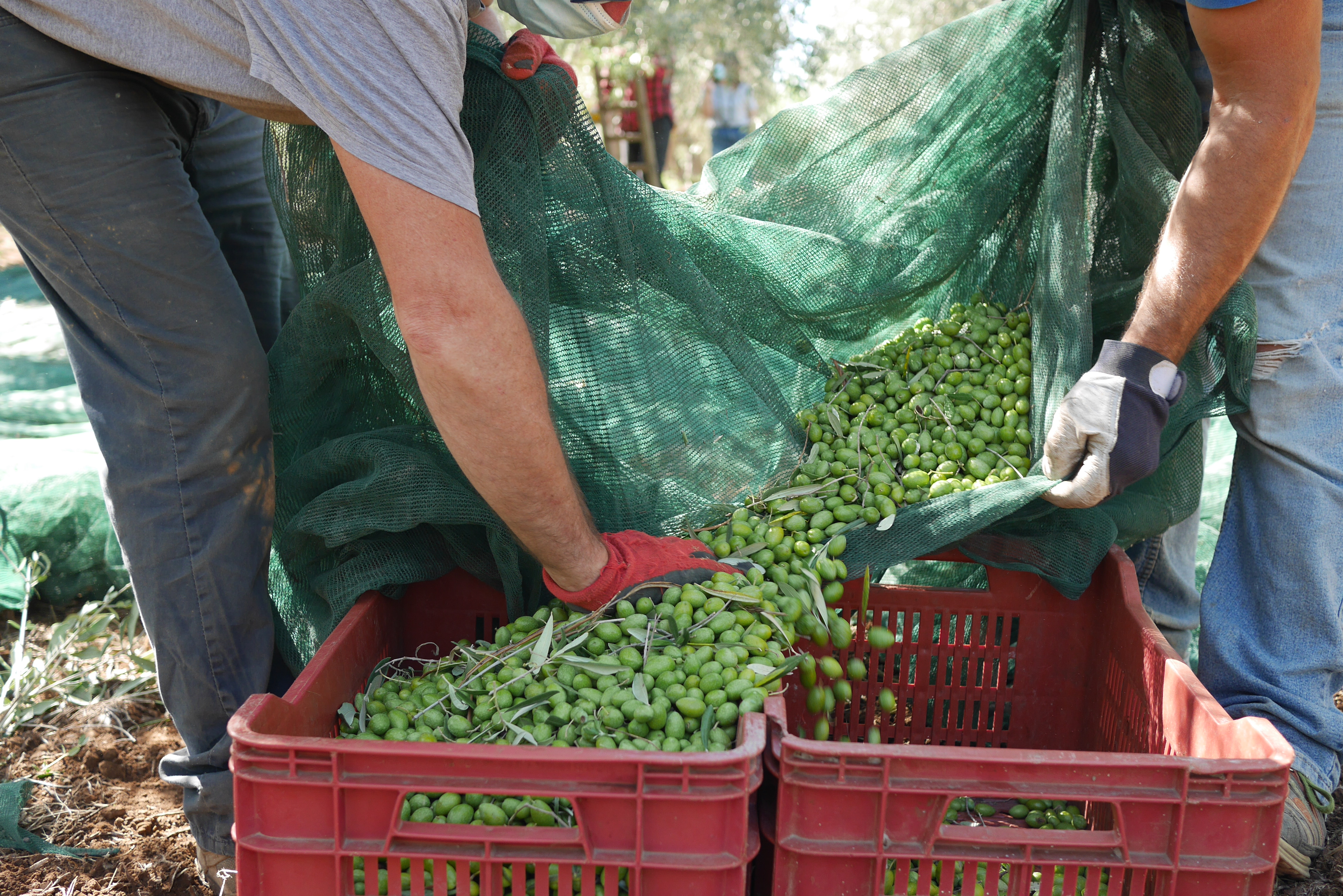
Washing and Cleaning
After sorting, the olives are washed to eliminate any remaining impurities. A conveyor system further cleans the fruit, ensuring they are pristine and ready for the next stage.
Cold Extraction
Modern olive mills predominantly employ the method of "cold extraction." Instead of pressing the olives, they are introduced into cylindrical metal crushers, where metal blades gradually crush them into a paste. The whole olive is turned into a paste which is then fed into a centrifuge, where the oil is separated from the pulp and the fruit's water content. The outcome consists of three elements: extra virgin olive oil, olive pulp or pomace, and the olives' water content.
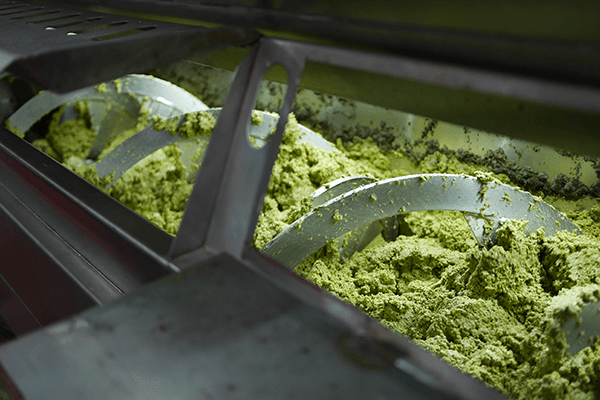
Quality Assessment and Tasting
As the fluorescent green oil begin to flow, the olive farmer and miller set aside a portion for tasting. In Italy, traditional tasting involves using simple crusty bread. Before the tasting, factors like colour and bouquet are carefully considered to gauge the oil's quality. You can read more about tasting olive oil here.
Filtering
In many cases, extra virgin olive oils undergo a filtering process to remove any remaining olive sediment. Filtration produces a translucent oil preferred by some consumers and extends the oil's shelf life. The oil is then given time for gravity to get to work, over time, the heavier sediment particles settle at the bottom. The oil is then filtered through a cotton sieve to remove small particles.
Olio Nuovo, the first delivery of the year for our quarterly subscribers, is an exception as it remains unfiltered, displaying a unique cloudy green appearance and intense flavour.
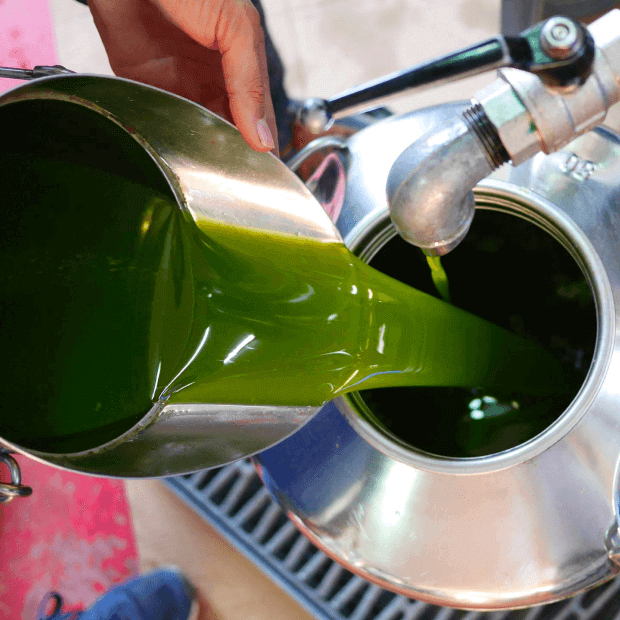
Utilizing the Pomace
The remnants left from the olive stones, flesh, and skin, known as "pomace," along with olive tree foliage, find valuable uses as alternative energy sources and compost material. Researchers are continuously exploring further applications for the pomace, including its use as animal feed.
As the demand for high-quality extra virgin olive oil continues to rise, so does the need for innovative techniques that enhance the production process. These cutting-edge technologies are designed to uphold the nutritional integrity and taste of the oil, ensuring that consumers receive nothing short of the finest product. Nudo Adopt is committed to evolving and bringing you the best olive oil.


